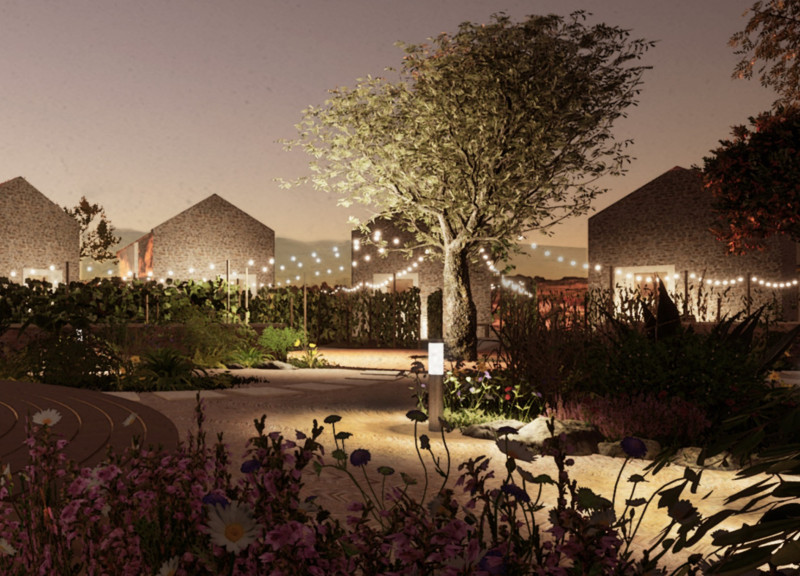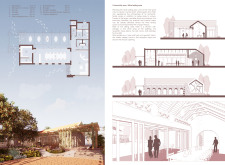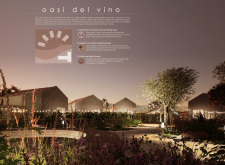5 key facts about this project
"Oasi del Vino" is an architectural design that integrates a winery with the surrounding landscape. Located amidst rolling hills and vineyards, the project combines functions such as wine tasting, dining, and lodging. The design focuses on creating a strong connection to nature, allowing visitors to appreciate both the building and the beauty of the environment around them.
Community Zone
The Community Zone serves as the focal point of the design. It features a wine tasting area designed to encourage social interaction. Large movable doors and windows facilitate a fluid connection between inside and outside spaces, making the area feel open and inviting. This layout supports various gatherings, allowing people to enjoy the winery's atmosphere while taking in expansive views of the landscape.
Transition Zone
Next to the Community Zone, the Transition Zone contains an Outdoor Gathering Area intended for relaxation and informal socializing. The space is filled with a variety of plants, enhancing the overall sensory experience for guests. Seating is arranged strategically to encourage visitors to engage with the surroundings, fostering casual conversations and connection among them.
Private Zone
The Private Zone consists of guest houses designed to provide comfort and privacy. Each unit faces the mountains, featuring large windows that frame the picturesque views. Inside, the layout includes living areas with kitchenettes and bathrooms on the ground floor, while sleeping spaces are placed in a gallery above. This arrangement maximizes the use of space while creating a cozy atmosphere that invites rest.
Sustainability
Sustainability plays a key role in the design of Oasi del Vino. The project incorporates reused bricks and wine barrels in its construction, showcasing a commitment to ecological responsibility. Systems for collecting rainwater have also been integrated into the design. These sustainable choices not only enhance the building but also reflect a thoughtful approach to environmental impact.
One notable detail within the project is the "wine wall" located behind the reception area. Made from used wine bottles, it serves as an engaging visual element. This design choice reinforces the identity of the winery while providing an informative and attractive feature for guests.






















































